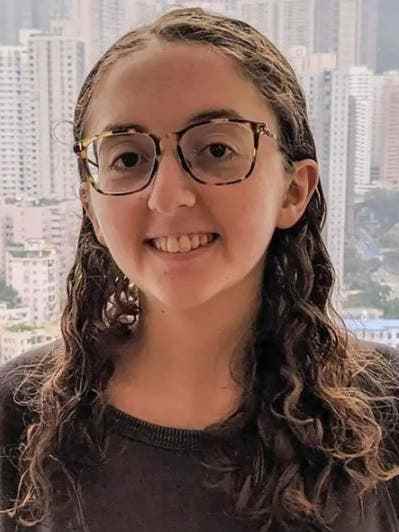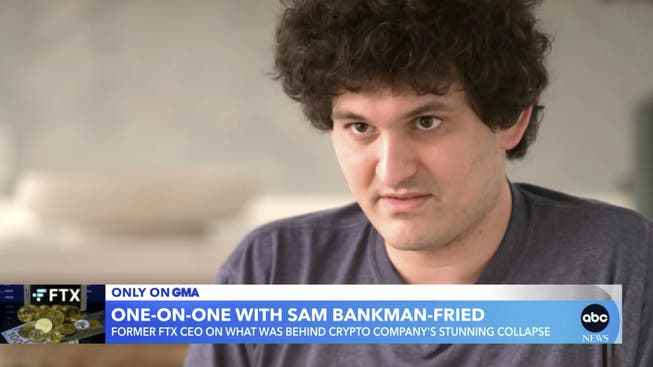Key figures in crypto exchange FTX’s bankruptcy learned their trade at Jane Street. At this discreet but influential trading house, dealing with major risks is part of everyday life.
In numerous media appearances, former FTX boss Sam Bankman-Fried presents himself as an overwhelmed amateur. Here in an interview with the US broadcaster ABC, which was broadcast nationwide.
The first steps in your career, the first job after university shape you for life; This also applies to Sam Bankman-Fried, the ex-head of the crypto exchange FTX, which went bankrupt in November. In 2013, while studying physics at the US elite university MIT, he did an internship at the trading house Jane Street. There he received his first permanent position after completing his bachelor’s degree.
Jane Street is a little-known but influential Wall Street firm. It has a reputation for attracting the brightest minds and making money with complex trading strategies. Risk management is practiced there obsessively.
After a few years at Jane Street, where he mainly traded ETFs, Bankman-Fried moved on. In 2017 he founded Alameda Research, a crypto trading house, from which he forked FTX two years later. At the beginning of the year, the crypto exchange was valued at $32 billion. The close ties between Alameda and FTX — the illicit diversion of billions of dollars in customer assets that Alameda used for speculation — led to a panic and withdrawal of customer funds in November, ultimately spelling the demise of the crypto empire.
Highly intelligent amateurs
The high speed of the implosion and the chaotic conditions that the liquidator found at FTX leave observers in disbelief: risk controls, accounting, governance – none of this even remotely existed at FTX. The desolate conditions are all the more astonishing given that the management team at FTX are supposedly highly intelligent graduates from US elite universities who should have strong analytical skills. Not only Bankman-Fried, but also key figures such as former CEO of Alameda Research, Caroline Ellison, and Brett Harrison, former head of subsidiary FTX USA, spent their early professional years at Jane Street.
Ever since FTX collapsed, Bankman-Fried has been trying to convince the public that he was an unknowing amateur caught unawares by the magnitude of events. “I don’t know exactly what happened. I’ve never tried to cheat,” he told a New York Times conference. Or: “I was surprised what happened”, “I don’t know what they (Alameda; editor’s note) did with the assets.” Or: “I don’t think I cheated. I tried to do my best.”
The failed crypto entrepreneur is spreading his version of events against the advice of his lawyers. Because with a million victims, an avalanche of lawsuits and class action lawsuits is likely to befall him soon. Each statement can additionally incriminate him.
«No technical analysis»
While Bankman-Fried has gone on the offensive in the media, Caroline Ellison has been in hiding since the bankruptcy. For good reason: As the last Alameda boss, she should know in detail what has happened in the last few days. Statements made by the 28-year-old in a YouTube interview in spring suggest that the risk controls at FTX were rather rudimentary: “We don’t do any technical analysis. We see ourselves as liquidity suppliers. We want to help customers trade and get better prices for them,” she said.
That didn’t stop Ellison from taking big risks. Alameda exploited price inefficiencies between different crypto exchanges to make profits from the price difference – so-called arbitrage trading. In order to maximize profits, trading volumes were multiplied by taking out loans, i.e. leveraged.
This so-called “margin trading” can be highly profitable, but is equally risky. Trading positions must also be secured. According to reports, customer deposits from the FTX platform were used for this purpose. Around $5 billion in customer assets are said to have been sent to Alameda, half of the trading house’s capital.

Caroline Ellison was one of FTX’s innermost circles and is said to have had an intimate relationship with Bankman-Fried at one point. They also have other things in common. Both come from an academic family. His parents were professors at Stanford, their professors at MIT. Both Ellison and Bankman-Fried are exceptional mathematical talents and describe themselves as adherents of “effective altruism”. And they both met at Jane Street. She was introduced to the firm by Bankman-Fried.
$16,500 for an internship
The entrance tests to get a job at Jane Street are among the most demanding in the industry. Particularly rigorous is the selection for the program that interested Ellison: quantitative trader. The environment naturally attracts physicists, mathematicians and natural scientists from top universities. Shorts, hoodies and flip-flops are part of the uniform of these Wall Street nerds. Because trading at Jane Street is largely automated, programming talent is more important than financial knowledge.
When it comes to payment, investment banks can hardly keep up. According to the industry portal eFinancialCareers, internships at Jane Street in the USA are remunerated with up to 16,500 dollars per month. Graduates start with a base salary of $200,000, plus a welcome bonus of $100,000 and additional performance-related bonuses ranging from $150,000 to a total of $450,000 straight out of college. In addition, the newcomers can expect a wealth of benefits and a flat hierarchy. Jane Street does not have a CEO but is run by a group of 30 to 40 experienced managers.
Little is known about Jane Street’s business. It is deliberately kept discreet and non-transparent. For security reasons, employees are not allowed to express themselves publicly. As one of the largest market makers in the world, Jane Street acts as a kind of “market lubricant”. The trading house ensures that large investors in specific market segments always have enough liquidity to carry out their large trades without distorting the market too much.
Like an actuary
It is particularly challenging to guarantee sufficient trading liquidity in extreme market situations – such as the Corona slump in March 2020. Like actuaries, Jane Street traders must calculate the probability of large, unpredictable events or crashes and map them into the trading algorithms. Almost every trading position is hedged. Millions are used annually for put options, typically to hedge against price falls. Risk hedging is vital to survive in market making. Especially when the stock market is under great stress, market makers are critical to ensure that trading does not dry up.
With just 2,000 employees, Jane Street is said to have managed a volume of $3.9 trillion in ETF trading and $4 trillion in stock trading in 2020, according to the Financial Times. More precise financial figures are not available. Jane Street sometimes makes money with arbitrage trades, such as buying and selling ETFs, high-frequency trading and, since 2017, also with market marking for cryptocurrencies.
Jane Street wants to ensure sufficient liquidity there too. They want to act as a “lender of last resort”, i.e. as a lender of last resort, since cryptocurrencies cannot rely on a central bank. The margins are very narrow, so large volumes have to be moved in order to make a profit. That makes the business very risky. Jane Street seems to have had the risks well under control so far, market shocks have been absorbed without any problems.
This is in complete contrast to her protégés Bankman-Fried and Caroline Ellison, who learned risk management and hedging from the ground up but implemented virtually none of it at FTX. The judges will have to decide whether they did so negligently or intentionally. Against this background, the fact that Sam Bankman-Fried presents himself as a goofy amateur who didn’t know exactly what he was doing seems rather implausible.
